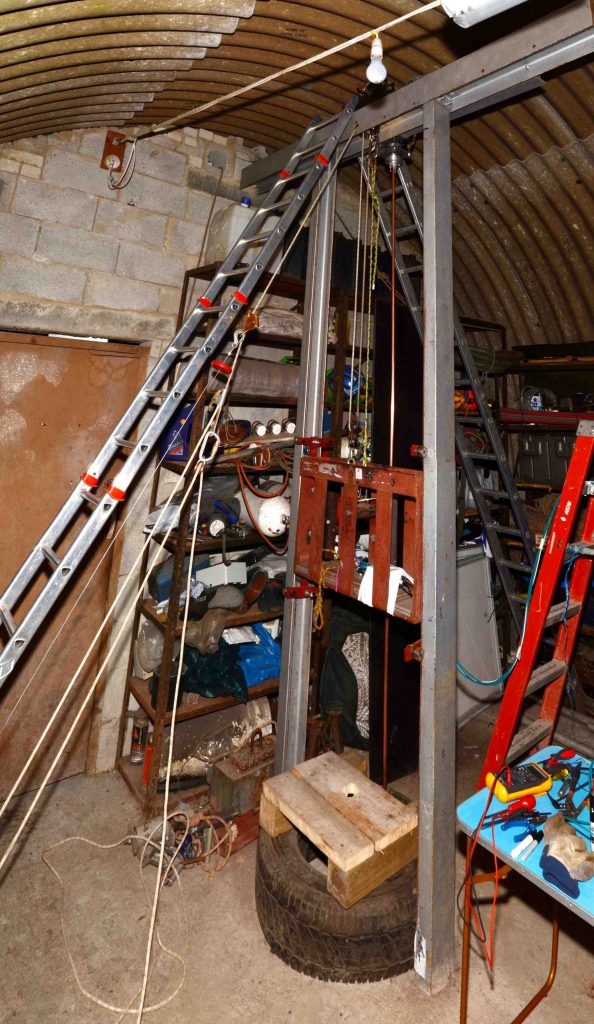For many years, a small group of enthusiastic individuals have been having a lot of fun breaking caving rope, and all in a good cause, too!
Their aim has been to develop an instrumented rope test rig to simulate what happens when a caver falls while attached to a rope. In their own words: “Occasionally the rope breaks and we get a satisfying crash.”
In advance of EuroSpeleo 2016, they have unveiled a new website, Rope Research which gives a detailed insight into their work.
To introduce this, Bob Mehew, who has been leading the project, contacted Darkness Below to let us know what they’ve been up to. He says:

“Having destructively tested rope samples on the BCA’s rope test rig made by the late Owen Clark, I felt we should be able to do better, most notably by seeing if there was a non destructive test so cavers could continue to use the rope after testing.
It has taken six years to get to a stage where we now have a working rig which measures data reliably and reasonably accurately when dynamically testing a sample of rope by letting it either arrest the fall of a test mass or break it. Initial results suggest reproducibility is probably tolerable provided one tests sufficient samples, around ten.
This has implications for testing since one sample uses some 2.5m of rope. Early work has already shown that a simple sample based on a length of rope with two knots arresting the fall of a test mass does not match simple mathematical theory or even more complicated models. In addition, we have recently just had implemented a number of improvements to a static rig such that we can break a rope in relatively slow motion, more casually known as ‘static’ testing.
A web site has been created which records some of our development work and also provides links to work we have published during the past 6 years. This also includes some high speed camera work on breaking a knot, showing that the knot breaks at the first bend on its active side . So we now can start doing some basic research to see if we can measure the properties of a rope non-destructively and correlate them to its performance in destructive tests. We just hope that it does not take a further 6 years to achieve that aim!
One clear feature observed from our work so far is the simple advice that if you do fall on a rope, then if at all possible, retie the knot before it is further used. A newly-tied knot absorbs a lot of energy and reduces the peak force. Relaxing (but not untying) the knots in your cows tails after each trip will help minimise the peak force you suffer if you should fall onto your cows tails and possibly save you from a serious injury or even death, given the state of some cows tails we have been asked to test!”
Correspondent: Bob Mehew
